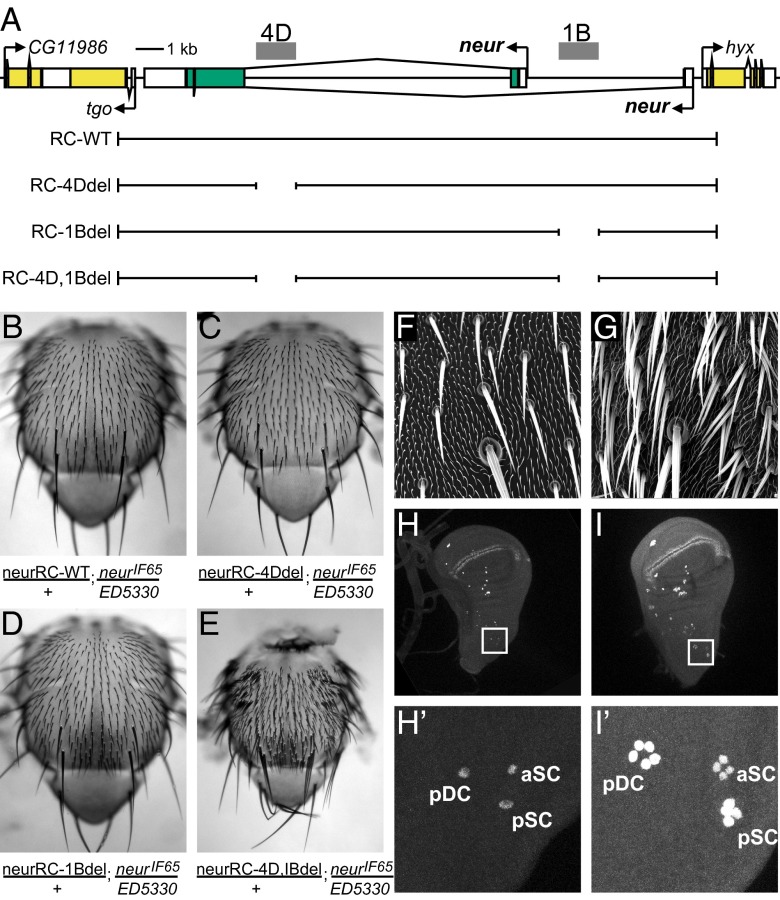Fig. 2.
The neur 4D and 1B SOP enhancers have overlapping functions. (A) Diagram of neur and flanking loci, showing genomic DNA fragments used in rescue transgene experiments. Scale is shown. (B–E) All four transgenes (A) can rescue the lethality and other mutant phenotypes associated with the neurIF65/Df(3R)ED5330 genotype, except the double-deletion construct neurRC-4D,1Bdel, which yields a strong “bristle tufting” phenotype characteristic of a failure of Notch-mediated lateral inhibition. (F and G) Scanning electron micrographs showing macrochaete and microchaete bristles on the thorax of neurIF65/Df(3R)ED5330 flies bearing the wild-type (neurRC-WT; F) or double-deletion (neurRC-4D,1Bdel; G) rescue transgenes. Note extensive “bristle tufting” phenotype in G. (H and I) The “bristle tufting” phenotype conferred by rescue with the double-deletion transgene (E and G) is due to ectopic SOPs (marked by anti-Sens antibody) arising within PNCs, indicating a failure of lateral inhibition. The number of SOPs per cluster observed here (H' and I') is comparable to that seen in clones homozygous for the neur1 allele (45), which bears a point mutation that abolishes Neur binding to Dl (46). pDC, aSC, pSC: posterior dorsocentral, anterior scutellar, and posterior scutellar macrochaete positions.

